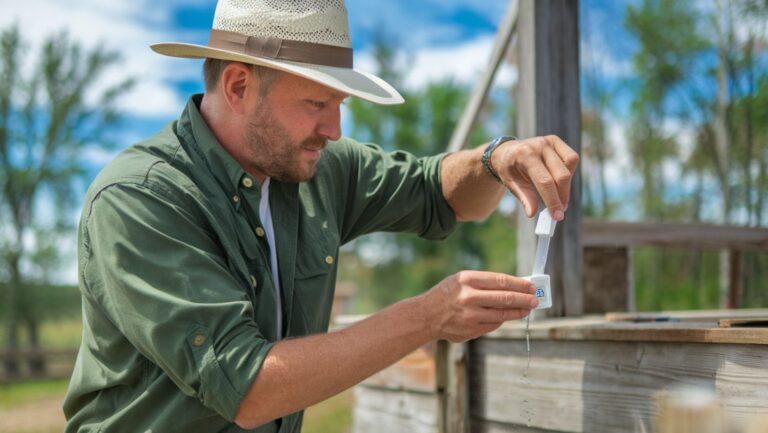Understanding Fluoride Levels: Is Well Water Fluoridated?
Have you ever wondered about the quality of your well water, especially when it comes to fluoride? Understanding the various aspects of fluoride in well water is essential for every homeowner. This article will provide a friendly and comprehensive guide to fluoride levels in well water, helping you discern if your water is fluoridated and if your family is consuming a safe amount of this mineral.

Understanding Fluoride: A Brief Overview
Before delving into the specifics of fluoride in well water, it’s important to understand what fluoride is. Fluoride is a naturally occurring mineral found in various environmental elements, such as water, soil, plants, and rocks. It has gained significant attention for its benefits to dental health.
The Benefits of Fluoride
Fluoride is often praised for its role in preventing tooth decay. It helps in the remineralization of tooth enamel and can reverse early signs of tooth decay. This is why fluoride is commonly added to public water supplies and dental products like toothpaste and mouthwash.
Sources of Fluoride
Fluoride can enter your body through various mediums, not just water. It is found in foods, dental products, and certain industrial emissions. Understanding these varied sources helps in better assessing overall fluoride exposure.
Fluoride Levels in Water: What to Know
The amount of fluoride in water can vary significantly depending on its source. Public health authorities, in many regions, regulate fluoride levels in municipal water supplies. But what about well water?
Naturally Occurring Fluoride
Some groundwater sources naturally contain fluoride. The concentration can vary depending on geographic and geological factors. In areas with high natural fluoride levels, well water may contain higher amounts of fluoride.
Fluoridation Practices
Municipal water supplies are often artificially fluoridated to ensure they contain optimal fluoride levels for dental health. This process is tightly regulated. However, private well water systems don’t typically undergo such processes, leaving you with the task of determining what level is present.
Testing Well Water for Fluoride
Understanding whether your well water is fluoridated starts with testing. Testing is the most reliable way to know the precise fluoride concentration in your water.
Why Test Your Well Water?
Testing is crucial because it gives you a clear understanding of your well water’s fluoride levels. This information is vital when you consider the health of your family, especially if you live in an area with naturally high fluoride levels.
How to Test Fluoride Levels
Testing can be done using commercial home test kits or by sending a sample to a laboratory. Professional testing is typically more accurate and comprehensive, offering insights into other potential contaminants as well.
When to Test Your Water
It’s recommended to test your well water at least once a year. If you notice any changes in taste, odor, or appearance, or if your well is subjected to flooding, it’s wise to test more frequently.
Interpreting Fluoride Levels
Once you have your test results, understanding them is the next step. So, what do these numbers mean for you and your family?
Recommended Fluoride Levels
Health organizations, such as the World Health Organization (WHO) and the United States Environmental Protection Agency (EPA), have guidelines for optimal fluoride levels in drinking water. Generally, 0.7 to 1.2 milligrams per liter (mg/L) is considered adequate for dental health.
Potential Risks of High Levels
While fluoride is beneficial in the right amounts, excessive fluoride can lead to dental fluorosis, skeletal fluorosis, and other health issues. It’s important to ensure that your water’s fluoride levels do not exceed recommended guidelines.
Understanding Test Results
If your test results indicate higher than recommended fluoride levels, consider taking action to mitigate exposure. Options range from water filtration systems to alternative water sources.

Solutions for Managing Fluoride Levels
If your well water has high fluoride levels, don’t worry—there are solutions. The goal is to ensure your family’s health by maintaining safe fluoride levels in your drinking water.
Water Filtration Systems
Various filtration systems can effectively reduce fluoride levels in well water. Reverse osmosis, activated alumina filters, and distillation units are among the most efficient methods available.
Alternative Water Sources
Depending on the severity of high fluoride levels, you might consider alternative water sources, like bottled water, especially for drinking and cooking purposes.
Regular Monitoring and Maintenance
Continuing to monitor your well water for fluoride and other contaminants can provide peace of mind. Regular maintenance of your well and filtration system ensures they’re functioning correctly and efficiently.
Living with Well Water: Considerations and Best Practices
Living with well water can require some additional considerations to ensure it’s safe and pleasant.
Know Your Local Geography
Understanding the geological factors that affect your groundwater will help you anticipate changes in its composition, including fluoride levels.
Consult Professional Guidance
Working with environmental professionals or a local health department can provide valuable advice on managing your well water’s quality.
Educate Your Family
Involving your family in understanding the importance of water quality promotes a joint effort in maintaining a healthy lifestyle. Sharing knowledge about why and how you ensure safe water can also instill good habits.
Conclusion: Ensuring Safe Water
Ensuring that your well water has safe fluoride levels is a critical aspect of maintaining your family’s overall health. By understanding the sources of fluoride and regularly testing your water, you can enjoy the benefits of well water without compromising safety. Whether through filtration systems or careful monitoring, proactive steps can keep your well water optimal for daily use. With the right information and tools at hand, you can feel confident in the water your family consumes.
By being informed and taking the necessary actions, you’re not just looking out for your own health but paving the way for future generations to thrive with safe well water.







